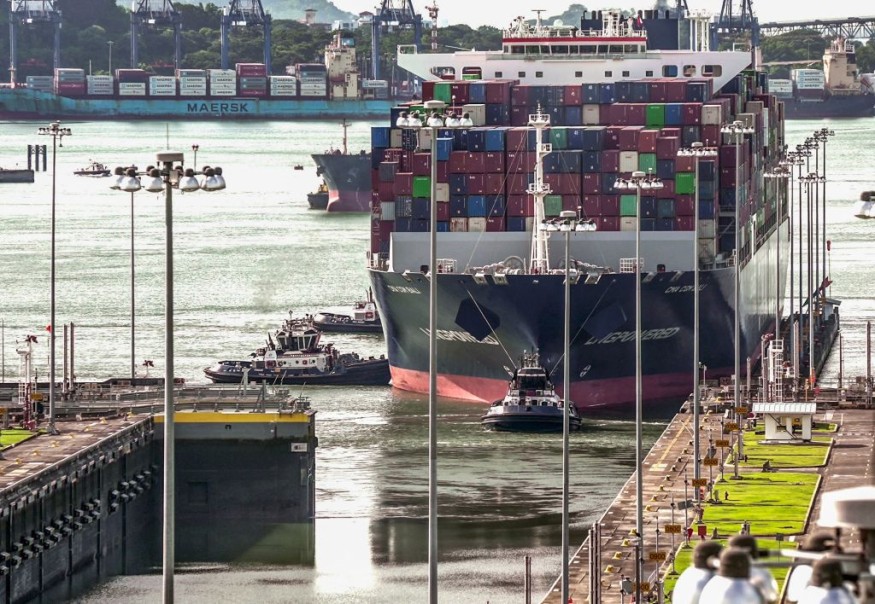
As the Panama Canal dries up amid a prolonged drought that has already been going on for 20 years, maritime trade is seeing difficulties and disruptions. The aforementioned disruptions pose a threat to international supply networks and sectors that rely on marine trade, especially in the United States.
Maritime Trade Disruptions in Panama Canal
The waterway administrator is concerned that if this year's drought persists, the Panama Canal could further decrease the maximum number of permissible daily vessel transits.
The trans-oceanic canal, which is thought to handle 5% of global trade, is currently experiencing a backlog of ships waiting to pass through. To save water, vessel draft and daily passage authorizations are being limited this year.
As a result, there is a need for many ships to lessen their loads before passage, and freight rates have increased in advance of the Christmas shopping season.
Currently, up to 32 ships are permitted to transit each day, as opposed to 36 ships under typical circumstances. The maximum vessel draft has been reduced from 50 feet to 44 feet.
The canal recently modified its reservation system to allow more unbooked ships to pass and to give priority to ships that have been waiting for the longest.
116 vessels were awaiting clearance to pass in Panama as of Tuesday, down from nearly 160 at the beginning of August. According to government data, the highest wait time was reduced from the previous month's 21 days to 14 days this month.
Cutting Down Daily Transits
As a historic drought challenges the trade route, Ricaurte Vásquez Morales, a representative of the Panama Canal Authority, outlined a potential water shortage in the area that would force a difficult decision between human consumption and transit.
Vásquez stated that the waterway would choose to reduce daily transits if necessary before planning any further reduction to allowed vessel draft, which started March 2023 and has the greatest impact on shippers.
There won't be any limits on passage this month but Vásquez said that the canal anticipates a potential reduction to 30-31 daily transits in its budget for the fiscal year that begins in October.
This year's El Niño weather phenomenon has been especially severe. Vasquez warned against assuming a great deal of rain in the future months due to the simultaneous occurrence of hot temperatures in the Pacific and Atlantic.
20-Year Drought
The canal connects two oceans, but in order to function, it needs fresh water from a neighboring lake, and that lake has been drying up due to a 20-year drought. As a result, there is less water earmarked for drinking by locals and for ships to navigate through.
Gatun Lake, which supplies the river, had water levels of 79.7 feet last week, down from the average of 87.3 feet for September in recent years.
The canal might be obliged to alter its weather modeling, which might lead to additional limits, Vasquez noted, if the drought lasts for more than a year. The official countered that there is no cause to think that the canal will stop running.
To ensure there is enough water for the canal, which requires 50 million gallons of water for every vessel going through, Panama will eventually need to alter how water flows to Gatun Lake.
Vasquez stated that they are eager to collaborate with the authorities to come to a decision that will enable the construction of new reservoirs. The proposed project, which would call for a change in the law and be filed to Congress, might be put out to bid the following year.
Prior to what is expected to be a period that will be considerably drier next year, experts have issued warnings about disruptions in maritime traffic. They claim that a possible early onset of Panama's dry season combined with warmer-than-average temperatures might accelerate evaporation and cause water levels to drop to almost record lows by April.
Related Article : 4-Year Extreme Drought Crisis in Iraq Destroys Fish Farms
© 2025 NatureWorldNews.com All rights reserved. Do not reproduce without permission.





